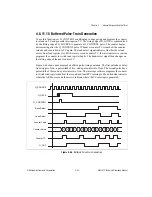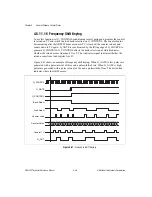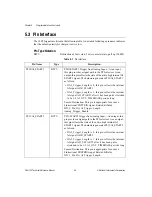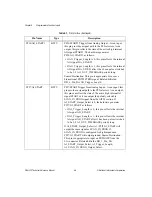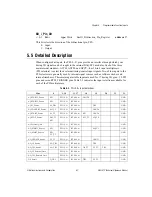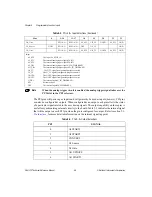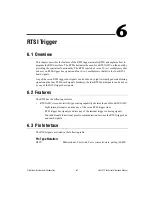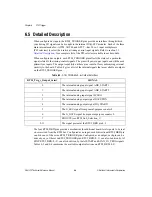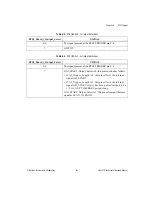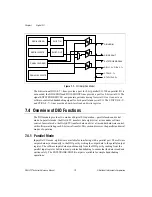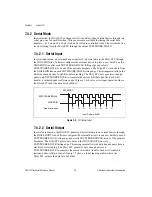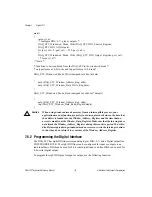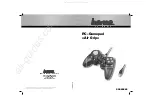
Chapter 6
RTSI Trigger
DAQ-STC Technical Reference Manual
6-2
©
National Instruments Corporation
6.4 Programming Information
This section presents programming information that is specific to the RTSI trigger. For
general information about programming the DAQ-STC, see section
.
6.4.1 Programming the RTSI Interface
This section contains detailed programming information for users who need to do bit-level
programming of the RTSI interface for specialized applications.
Table 6-1.
Pin Interface
Pin Name
Type
Description
RTSI_TRIGGER<0..6>
B9TU
RTSI Trigger—As an input, these pins are the seven RTSI
trigger lines. As an output, these pins can be driven from
12 signal sources ADR_START1, ADR_START2,
SCLKG, DACUPDN, DA_START1, G_SRC 0, G_GATE
0, RGOUT0, and RTSI_BRD<0..3>. Source/Destination:
These pins are appropriate for use as bidirectional
RTSI_TRIGGER bus signals. Related bitfields:
RTSI_Trig_i_Pin_Dir, RTSI_Trig_i_Output_Select.
RTSI_BRD<0..3>
B9TU
RTSI Board Interface—Configured as an input, each
bidirectional RTSI_BRD pin can drive any of the seven
RTSI_TRIGGER pins. RTSI_BRD<0..1> can also be
driven by AI STOP and RTSI_BRD<2..3> can also be
driven by the AI START and SCAN_IN_PROG signals.
These pins provide a mechanism for additional board-level
signals to be sent on or received from the RTSI bus.
Related bitfields: RTSI_Board_i_Pin_Dir,
RTSI_Board_i_Output_Select.
RTSI_OSC
B9TU
RTSI Oscillator Source—RTSI_OSC is a bidirectional pin.
Programmed as an input, it is the alternate timing source
for the DAQ-STC. Programmed as an output, this pin
carries the OSC signal. The pin is used for
multiple-DAQ-STC synchronization across the RTSI bus.
Source/Destination: RTSI bus. Related bitfields:
RTSI_Clock_Mode.


